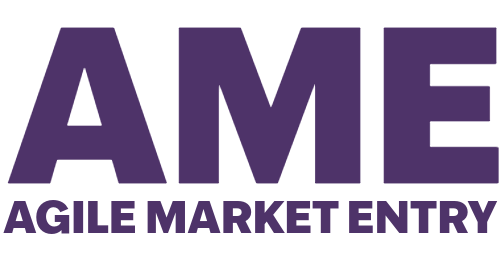
How Medicaid Reimbursement Works
In the competitive world of MedTech innovation, reimbursement strategies are often the key to ensuring a product’s market success. However, many startups and companies entering the market overlook the critical timing and planning required to navigate the complex reimbursement landscape. In a recent online discussion led by industry experts Kim Norton of Reimbursement Ally and Chris Morrison of ViaVerus, the conversation delved into how Medicaid reimbursement works and the importance of integrating reimbursement into a MedTech company’s go-to-market strategy early on. You can enjoy the live discussion here or read this summary of their insights.
 When Should You Start Your Medical Reimbursement Plan?
When Should You Start Your Medical Reimbursement Plan?
As Chris Morrison highlights, the timing of a reimbursement strategy is crucial for MedTech startups. He stresses that many companies begin the process too late, hindering their market development. While launching a product, it is important to understand where reimbursement fits into the broader market strategy. This is especially relevant for companies with products that either fit into existing reimbursement codes or need to develop new ones. The key is integrating reimbursement considerations right from the product development stage to avoid costly delays and errors.
How Do I Know If My Product Needs a Medical Reimbursement Strategy?
Chris Morrison and Kim Norton classify MedTech clients into four key “buckets” based on their reimbursement needs:
- Existing Code Utilization:
If the product falls under an existing code—whether inpatient, outpatient, or clinic-specific such as Diagnosis-Related Groups (DRGs) or CPTs—companies should first determine if the reimbursement structure is viable. Understanding the financials and leveraging existing codes can save time and simplify market entry. - New Code Development:
When a product does not fit into existing codes, companies face the challenge of obtaining new ones. This requires a completely different go-to-market strategy, as it involves engaging with medical societies, payers, and regulatory bodies. New code development can be a long, costly process but is essential for many innovative products. - Patient-Pay Models:
For certain MedTech products, particularly those in fields like cosmetic surgery or digital health, a direct-to-consumer approach may be viable. In this case, the patient bears the cost rather than relying on insurance reimbursement. This strategy allows for quicker market entry, but it comes with its own challenges, such as establishing a clear value proposition for patients. - Non-Coding Scenarios:
Some products may not require specific coding or reimbursement considerations, particularly if they fall into broader categories like DRG systems (Diagnosis-Related Groups) in hospitals. In these cases, the focus shifts to market demand and sales strategies rather than reimbursement planning.
 Existing Code vs. New Code: Timing and Cost Considerations
Existing Code vs. New Code: Timing and Cost Considerations
Understanding whether a product fits into an existing code or requires a new one is vital. For products utilizing existing codes, companies should verify this with medical specialty societies. Kim Norton points out that some companies mistakenly assume they are covered under an existing code, only to face challenges down the road. Engaging with specialty societies and the American Medical Association (AMA) early on can prevent these issues.
If a company determines that a new code is necessary, starting this process early in product development is essential. Waiting until commercialization is a common mistake that can put companies years behind competitors. For those needing new codes, companies should anticipate higher costs and longer timelines, often requiring additional investment to pursue a new CPT (Current Procedural Terminology) code.
Coverage: The Third Leg of the Reimbursement Stool
Reimbursement doesn’t stop at codes. Coverage—the determination by insurers of whether a procedure is deemed medically necessary—is equally important. Even if a product has a code, it may not be covered by insurers if it doesn’t meet their medical necessity criteria. This can lead to denied claims, non-payment, and challenges for providers who are using the product. Companies must consider payer policies and the specific criteria for coverage.
Both experts recommend startups consult with insurance companies, such as Medicare and private payers, during the clinical trial stage to gather insights on what data they will require for future coverage determinations. This proactive approach can save time and money by ensuring that the data collected during trials supports both regulatory approval and payer coverage requirements.
 New Code Strategy and Clinical Trials
New Code Strategy and Clinical Trials
For companies developing innovative products that do not fit existing codes, planning for a new code begins in the clinical trial phase. Gathering evidence during trials is critical for both regulatory and reimbursement success. Asking payers directly what data they require, such as clinical outcomes and health economics data, to demonstrate the product’s value is recommended. The best time to start planning for reimbursement is during product development. By aligning trial design with reimbursement requirements, companies can gather the necessary data to support their future market entry.
In the MedTech industry, reimbursement can make or break a product’s success. Knowing how Medicaid reimbursement works and working with insurers on how to integrate reimbursement strategies early in the development process is crucial for navigating complex payer requirements, developing codes, and securing coverage. By understanding the four key reimbursement scenarios—leveraging existing codes, developing new ones, adopting patient-pay models, or bypassing coding needs altogether—MedTech companies can position themselves for success in a highly competitive market.
At ViaVerus, as part of Our Agile Market Strategy process, we consider what bucket your product will fall into early in the game and show you how and when to integrate a medical reimbursement plan into your overall MedTech launch. Connect with us on LinkedIn to learn more.


 When Should You Start Your Medical Reimbursement Plan?
When Should You Start Your Medical Reimbursement Plan? Existing Code vs. New Code: Timing and Cost Considerations
Existing Code vs. New Code: Timing and Cost Considerations New Code Strategy and Clinical Trials
New Code Strategy and Clinical Trials